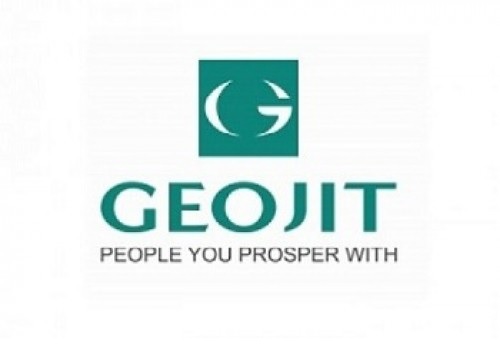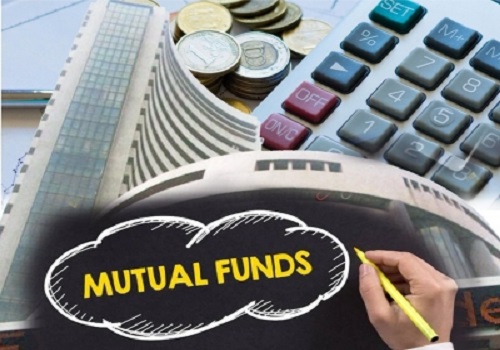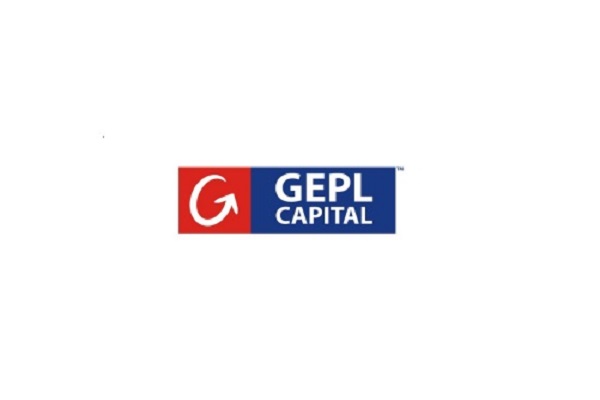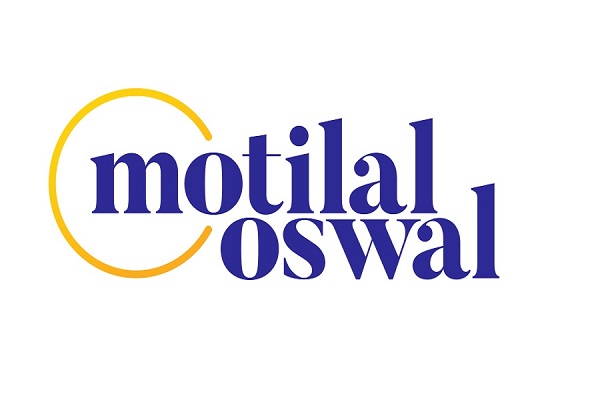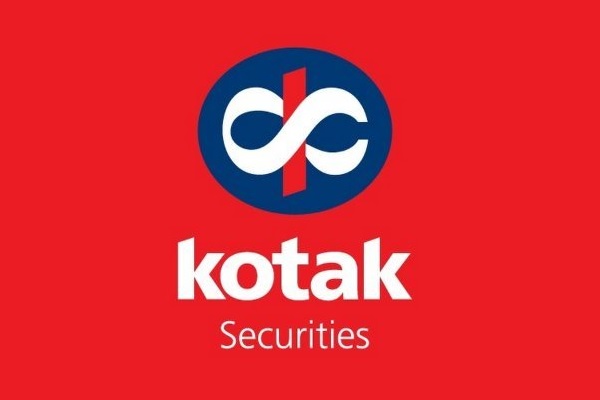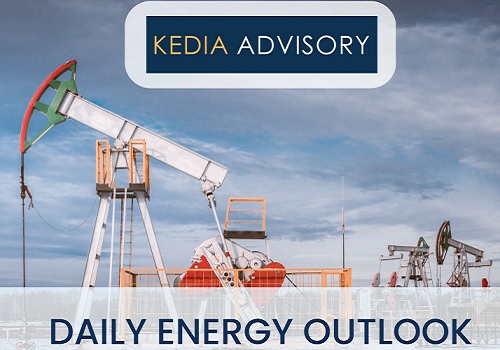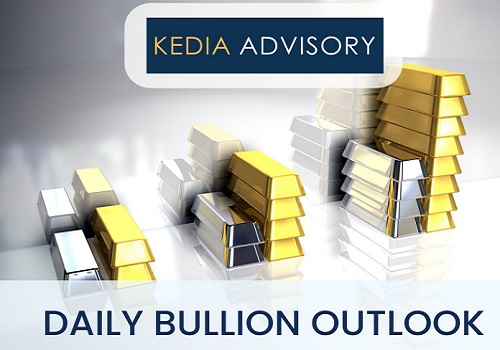Jeera trading range for the day is 18820-19260 - Kedia Advisory

Gold
Gold prices slipped by 0.22% to settle at 99,109 as geopolitical uncertainty eased slightly after U.S. President Donald Trump delayed a decision on potential military involvement in the ongoing Israel-Iran conflict. The White House confirmed that a decision would come within two weeks, providing temporary relief to risk markets and reducing immediate safe-haven demand. Simultaneously, the U.S. Federal Reserve held interest rates steady and signaled two rate cuts in 2024, followed by a slower pace of easing through 2026–2027, signaling a cautious monetary approach amid persistent inflation and slowing economic momentum. Physical gold demand showed mixed trends. In India, domestic prices eased slightly, encouraging retailers to cut discounts to $27 per ounce, down from $63 the prior week. This hints at a gradual improvement in demand ahead of the festive season beginning in mid-August. In China, premiums dipped to $0–$10 per ounce from last week’s $8–$14 due to subdued activity and high local rates. According to the World Gold Council, global gold demand rose 1% YoY in Q1 2025 to 1,206 metric tons. Investment demand surged by 170%, driven by ETF inflows and a 14% increase in gold bar purchases. However, jewellery demand declined 21% to 380.3 tons due to high prices. Central bank buying fell 21% to 243.7 tons, though 95% of banks still expect global reserves to rise. Technically, the market is under fresh selling, with open interest rising 0.93% to 14,737. Immediate support lies at 98,630, with deeper downside potential to 98,145. Resistance is seen at 99,400, and a break above could target 99,685.
Trading Ideas:
* Gold trading range for the day is 98145-99685.
* Gold falls as Trump delays decision on U.S. involvement in Israel-Iran air conflict.
* Fed holds rates; signals 0.50% cuts in 2025, slower easing in 2026–2027.
* Indian gold dealers cut discounts to $27/oz as lower prices lift domestic demand.
Silver
Silver prices declined by 1.09% to settle at 106,224 as traders engaged in profit booking following a sharp rally that had pushed prices to all-time highs. The recent surge was driven by safe-haven demand amid escalating geopolitical tensions, but widespread market volatility prompted investors to liquidate positions in precious metals to cover losses elsewhere. Additionally, the U.S. Federal Reserve held interest rates steady, reaffirming a cautious, data-dependent stance, while signaling two rate cuts by year-end. However, Fed Chair Jerome Powell warned that President Trump’s new tariffs could further stoke inflation, adding uncertainty to the economic outlook and tempering investor enthusiasm for metals. On the supply front, sentiment was weighed by news of a major mineral discovery in Argentina, estimated to hold over 80 million ounces of silver, along with significant copper and gold reserves—the largest such find in 30 years. Despite these pressures, silver’s fundamental outlook remains firm. The Silver Institute forecasts the market will record a deficit for the fifth consecutive year in 2025, even as the shortfall narrows 21% to 117.6 million ounces. Industrial demand is projected to hit a new record, exceeding 700 million ounces, supported by green technology adoption. While jewellery demand may drop 6%—led by India due to high local prices—physical investment is expected to grow 3%, particularly in Western markets. Technically, silver is under long liquidation as open interest dropped by 12.99% to 12,714. Support is seen at 105,285; breaking below may test 104,350. Resistance lies at 106,925, and a breakout could push prices to 107,630.
Trading Ideas:
* Silver trading range for the day is 104350-107630.
* Silver drops as traders continue to book profits after rally to all-time highs.
* Middle East conflict sparks broad market selloff, prompting liquidation of precious metals.
* Fed holds rates; signals two cuts by year-end with a cautious, data-driven approach.
Crude oil
Crude oil prices declined by 0.70% to settle at 6,404 as traders booked profits after a recent rally, even as the market remains poised for a third consecutive weekly gain. The downside pressure was primarily driven by the White House's delay in deciding on U.S. involvement in the escalating Israel-Iran conflict. While geopolitical risks persist, the absence of immediate U.S. military action reduced panic-driven buying. However, volatility remains elevated as President Donald Trump is expected to make a decision within two weeks. From a supply perspective, Russian Deputy Prime Minister Alexander Novak stated that the global oil market is balanced with no signs of shortages despite tensions in the Middle East. He downplayed the possibility of oil prices hitting $100 per barrel, noting that any surge would be more dependent on market sentiment than supply fundamentals. In the U.S., bullish inventory data lent some support—EIA data showed crude inventories dropped by a massive 11.473 million barrels in the week ending June 13, the largest draw in a year and far exceeding expectations of a 2.3 million-barrel decrease. Looking ahead, the IEA reaffirmed its view that global oil demand will peak around 2029 at 105.6 million bpd, followed by a slight decline in 2030. This contrasts with OPEC’s view of continued long-term growth. Technically, the market is under fresh selling, with open interest rising by 7.35% to 9,524. Support is at 6,301; below that, prices may test 6,199. Resistance is seen at 6,485, with a breakout potentially pushing prices to 6,567.
Trading Ideas:
* Crudeoil trading range for the day is 6199-6567.
* Crude oil dips as Trump delays decision on U.S. involvement in Israel-Iran conflict
* Russia’s Novak says oil market is balanced; no risk to Russian exports from crisis.
* IEA sees oil demand peaking at 105.6M bpd in 2029; production capacity to rise.
Natural gas
Natural gas prices plunged by 5.56% to settle at 333.1, driven by aggressive profit booking after a strong rally earlier in the week, despite supportive fundamentals such as rising summer temperatures and ongoing geopolitical tensions. Forecasts for hotter weather across key regions in the U.S. had initially fueled expectations of higher cooling demand, increasing gas usage by power generators. However, traders booked profits as prices neared resistance levels. Geopolitical risks remain elevated, particularly after Israel’s strikes on Iranian nuclear and military targets, raising fears of possible disruptions in LNG shipments via the Strait of Hormuz, a key global supply route. According to the U.S. EIA, utilities injected 95 billion cubic feet (bcf) of natural gas into storage for the week ending June 13, marginally below expectations of 96 bcf. Despite this, inventories now stand at 2.802 trillion cubic feet—6.1% above the five-year average but 7.7% below last year’s levels, signaling a relatively balanced supply outlook. Meanwhile, the EIA’s Short-Term Energy Outlook forecasts U.S. dry gas production will hit a record 105.9 bcfd in 2025, up from 103.2 bcfd in 2024. Domestic demand is also projected to rise to 91.3 bcfd in 2025, with LNG exports expected to surge to 14.6 bcfd, highlighting continued long-term strength in the market. Technically, the market is under long liquidation, with open interest dropping sharply by 25.21% to 11,778. Support is at 323.4, with further downside toward 313.7 possible. Resistance lies at 351, and a breakout above could retest 368.9.
Trading Ideas:
* Naturalgas trading range for the day is 313.7-368.9.
* Natural gas dips on profit booking after rally driven by hot weather forecasts.
* Israel-Iran conflict raises LNG supply concerns via the crucial Strait of Hormuz.
* U.S. gas output averages 105.3 bcfd in June, slightly below March’s record levels.
Copper
Copper prices edged higher by 0.24% to close at Rs.880.4, supported by tightening inventories and short covering. The rally came despite broader market uncertainty stemming from geopolitical tensions and tariff-related anxieties. Inventories in Shanghai Futures Exchange-monitored warehouses declined by 1.1% from last Friday, adding to bullish sentiment. More notably, LME copper warehouse stocks have plunged over 60% since mid-February to 99,200 tons—marking their lowest since August 2023. Further pressure on available supply is seen from the 45% of LME stocks under cancelled warrants, indicating metal earmarked for delivery. Meanwhile, premiums for nearby LME copper contracts surged to their highest since October 2022. The cash-to-three-month premium jumped to $180 per ton from just $3 a month ago, reflecting intense short-term demand amid limited availability. The "tom-next" spread also flipped from a $2 discount to a $48 premium within a week, underscoring the market’s tightness. However, global fundamentals remain mixed. According to the International Copper Study Group, the refined copper market posted a 17,000-ton surplus in March, down from 180,000 tons in February. Chinese copper imports in May dropped 2.5% month-on-month to 427,000 tons, and unwrought copper imports fell 6.7% YTD, reflecting weaker downstream demand in the world’s top consumer. Technically, copper is undergoing short covering, with open interest dropping 12.92% to 2,406 lots. Support lies at Rs.873.8, with further downside risk to Rs.867.1. Resistance is seen at Rs.885.5; a break above may push prices toward Rs.890.5.
Trading Ideas:
* Copper trading range for the day is 867.1-890.5.
* Copper gains as copper inventories in warehouses monitored by the SHFE fell 1.1% from last Friday.
* Geopolitical risk grows with escalating Israel-Iran tensions and possible U.S. strike.
* LME copper stocks drop over 60% since mid-February, now at 99,200 tons.
Zinc
Zinc prices edged lower by 0.14% to settle at 253.3 as market sentiment remained fragile amid lingering geopolitical tensions and weak demand signals from China. The ongoing Israel-Iran conflict continues to inject uncertainty into global commodity markets, while lackluster progress in U.S.-China trade negotiations has also capped investor optimism. Additionally, pressure mounted from subdued manufacturing activity in China, with buyers limiting purchases to immediate requirements due to sluggish industrial demand. However, China’s factory output growth slowed to a six-month low, reflecting the persistent strain on the manufacturing sector. Inventories at the Shanghai Futures Exchange declined by 5.7% from the previous week, hinting at tightening near-term supply. Globally, zinc fundamentals remain mixed. The zinc market surplus narrowed to 16,000 metric tons in April, down from 23,400 tons in March, according to the International Lead and Zinc Study Group. For the first four months of 2025, the global surplus stood at 151,000 tons—less than the 176,000-ton surplus recorded in the same period last year. On the production front, Teck Resources’ Red Dog Mine saw output fall 20% YoY in Q1, while Australia's Nyrstar plans to cut output by 25% this year due to low treatment charges. Technically, zinc is under long liquidation, with open interest falling 13.46% to 1,363 lots. Support is at 252.1, with further downside to 250.9. Resistance is likely at 254.1, and a break above may lead to testing 254.9.
Trading Ideas:
* Zinc trading range for the day is 250.9-254.9.
* Zinc dropped amid ongoing uncertainty over the Israel-Iran conflict.
* The global zinc market surplus fell to 16,000 metric tons in April from 23,400 tons in March.
* Zinc inventories in warehouses monitored by the SHFE fell 5.7% from last Friday
Aluminium
Aluminium prices gained 0.53% to settle at 246.5 amid stable supply dynamics and supportive fundamentals, even as broader market sentiment was weighed down by geopolitical uncertainty and subdued Chinese demand. The market found some relief after U.S. President Donald Trump delayed a decision on potential U.S. military involvement in the Israel-Iran conflict, easing immediate risk-off sentiment. However, concerns over upcoming tariff policies and fragile global trade conditions continued to limit upside momentum. Domestic aluminium fundamentals remain firm. Operating capacity has been stable, with a notable reduction in casting ingot volume contributing to ongoing destocking across inventories. On the global front, supply risk resurfaced as tensions escalated in Guinea, one of the world’s top bauxite exporters. Disputes between the Guinean government and Emirates Global Aluminium have cast doubt on long-term mining licenses, raising concerns over raw material availability for aluminium production. Meanwhile, global primary aluminium output rose 1.5% year-on-year to 6.245 million tonnes in May, according to the International Aluminium Institute (IAI), reflecting modest growth. China’s aluminium production rose 5% YoY in May to 3.83 million tonnes, pushing total output for the first five months to 18.59 million tonnes, up 4%. However, exports dropped 3.2% YoY, showing weaker international demand. Technically, the market is under short covering as open interest declined by 17.87% to 1,972 lots. Support is at 244.4, with further downside potential to 242.2. Resistance is likely at 247.9, and a breakout could see prices testing 249.2.
Trading Ideas:
* Aluminium trading range for the day is 242.2-249.2.
* Aluminium gains after Trump pushed back a decision on U.S. military involvement in the Israel-Iran conflict.
* Global primary aluminium output in May rose 1.5% year on year to 6.245 million tonnes.
* Aluminium inventories in warehouses monitored by the Shanghai Futures Exchange fell 5.0% from last Friday
Cottoncandy
Cottoncandy prices settled higher by 0.4% at 53,210 amid short covering after recent pressure from improved domestic supply estimates. The Cotton Association of India (CAI) slightly raised its cotton production forecast for the 2024–25 season to 291.35 lakh bales, attributing the revision to increased output in Odisha. Despite the marginal upward revision, demand-side data continues to show sluggishness. CAI cut domestic consumption estimates to 307 lakh bales from 315 lakh, citing weak textile industry demand. Exports were also trimmed by 1 lakh bale to 15 lakh, a significant decline from last season’s 28.36 lakh bales. Imports remained unchanged at 33 lakh bales, already surpassing the previous season's total of 15.2 lakh bales, reflecting strong import dependence amid quality and pricing considerations. On the global front, the June WASDE report highlighted tighter cotton supply, projecting world production at 116.99 million bales for 2025–26, down 820,000 bales from May’s forecast. India, the U.S., and Pakistan saw lower output, outweighing a 1-million-bale increase in China. Global consumption is expected to dip slightly to 117.76 million bales, with reductions in India, Turkiye, and Bangladesh offsetting gains in Egypt. Technically, Cottoncandy is under short covering as open interest dropped by 7.14% to 65 lots, and prices gained 210. Immediate support is at 53,040, with a break potentially pushing prices to 52,870. Resistance lies at 53,340; a move above this could test 53,470.
Trading Ideas:
* Cottoncandy trading range for the day is 52870-53470.
* Cotton gained on short covering after prices dropped amid slight upward revision in India’s output estimate.
* CAI cut consumption forecast by 8 lakh bales to 307 lakh for the 2024–25 season.
* Cotton exports expected to fall to 15 lakh bales, down 13.36 lakh from last year.
* In Rajkot, a major spot market, the price ended at 25875.05 Rupees dropped by -0.58 percent.
Turmeric
Turmeric prices edged up by 0.68% to settle at 14,264, recovering on short covering after recent weakness driven by tepid domestic and export demand. The market also saw an increase in arrivals, with 13,660 quintals reaching the mandis compared to 11,940 in the previous session. Despite this uptick in availability, the upside was supported by concerns over lower production estimates for the 2024–25 season and strong quality-driven demand in select markets. Turmeric acreage has reportedly increased by 10% year-on-year to 3.30 lakh hectares, as farmers pivot toward turmeric due to poor profitability in other crops. However, actual production is unlikely to rise proportionately as erratic rainfall and adverse weather may reduce productivity. In 2023–24, total turmeric output stood at 10.75 lakh tonnes, and new crop yields this year are expected to be 10–15% lower, especially in regions like Nanded, where crop rot and undersized rhizomes have been reported. At Duggirala market, buyer interest remains high for fresh arrivals, with new crop consistently fetching a premium due to superior quality. On the export front, turmeric shipments rose by 8.83% to 176,325 tonnes in FY25. However, March 2025 saw a 13.41% year-on-year drop, though up 20.39% from February levels. Technically, turmeric is under fresh buying as open interest rose 2.09% to 17,555. Support lies at 14,104, with further downside at 13,942. Resistance is seen at 14,374, and a move above may lead to testing 14,482.
Trading Ideas:
* Turmeric trading range for the day is 13942-14482.
* Turmeric gained on short covering after prices dropped due to weak domestic and export demand.
* Arrivals rose to 13,660 quintals vs. 11,940 in the previous session, indicating increased availability
* Turmeric exports during Apr - Mar 2025, jump by 8.83 percent at 176325.34 tonnes compared to Apr - Mar 2024.
* In Nizamabad, a major spot market, the price ended at 14315.4 Rupees dropped by -0.29 percent.
Jeera
Jeera prices declined by 1.09% to settle at 19,030 amid continued weakness in both domestic and export demand following the conclusion of the peak retail season. Traders attributed the recent fall to lackluster buying interest from overseas clients and minimal domestic consumption, which typically slows during this period. Despite geopolitical supply disruptions in major jeera-producing countries like Syria, Turkey, and Afghanistan, Indian jeera exports remain subdued, limiting upward momentum. Comfortable supply levels are adding further pressure to prices. Farmers reportedly still hold around 20 lakh bags of jeera, of which only 3–4 lakh bags are expected to be traded by the season’s end. This suggests a substantial carry-forward stock of around 16 lakh bags, undermining market sentiment. Although production this season is expected to be in line with last year due to favorable sowing and crop conditions, the surplus inventory continues to weigh on prices. Jeera exports rose 39.63% in FY2025 to 2.12 lakh tonnes compared to 1.52 lakh tonnes in FY2024, indicating healthy annual growth. However, March 2025 exports dropped 46.03% year-on-year to 17,337.91 tonnes, reflecting weak short-term demand. On the import front, India imported just 1,194.29 tonnes in FY2025, a steep 93.2% drop from the previous year, confirming sufficient domestic supply. Technically, the market is under long liquidation, with open interest down by 0.18% to 6,672 lots and prices falling 210. Immediate support is seen at 18,930, with further downside potential to 18,820. Resistance lies at 19,150; a breakout above this may lead to testing 19,260.
Trading Ideas:
* Jeera trading range for the day is 18820-19260.
* Jeera prices dropped due to weak domestic and export demand.
* Ample existing stock and comfortable supply are dampening price prospects.
* Global supply disruptions haven't translated into higher Indian exports due to tepid demand.
* In Unjha, a major spot market, the price ended at 19533.3 Rupees dropped by -0.94 percent.
Views express by all participants are for information & academic purpose only. Kindly read disclaimer before referring below views
